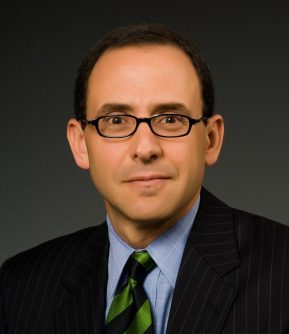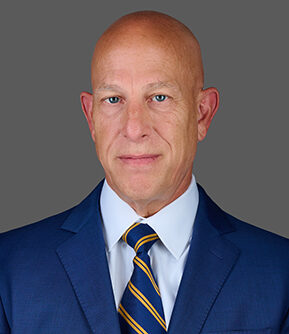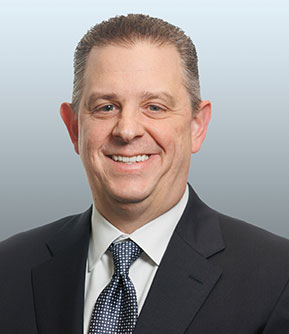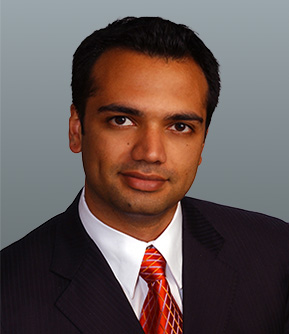Federal Reserve’s Main Street Lending Program
On Thursday April 9, 2020, the Federal Reserve unveiled the Main Street Lending Program (the “Program”) pursuant to a mandate from Congress to promote maximum employment and stable prices, along with the Federal Reserve’s responsibilities to promote the stability of the financial system. The Program will make available $600 billion for Eligible Lenders (as defined below) to provide loans or to upsize existing loans for small and mid-sized businesses who have been negatively affected by the COVID-19 pandemic. This Program will be especially beneficial to businesses that do not qualify for the small business loans provided by the Paycheck Protection Program; however, businesses that obtained financing through the Paycheck Protection Program may still take advantage of this Program.
The Federal Reserve’s implementation of the Program creates two facilities for certain qualifying small and mid-sized businesses: (i) the Main Street New Loan Facility (the “MSNLF”) and (ii) the Main Street Expanded Loan Facility (the “MSELF” together with the MSNLF, collectively, the “Facilities”). The MSNLF will provide new unsecured term loans to Eligible Borrowers (as defined below), and the MSELF will allow Eligible Borrowers to upsize their existing term loans originated before April 8, 2020 from Eligible Lenders, provided that the upsized tranche has certain criteria described in the MSELF Program.
The Federal Reserve established a Special Purpose Vehicle (“SPV”) to purchase 95% of the loans (or 95% of the upsized tranche of the loans) issued by Eligible Lenders in connection with the Program. Accordingly, Eligible Lenders will be incentivized to provide financing to Eligible Borrowers under the Program because they will collect origination and servicing fees while the SPV retains most of the credit risk.
We strongly encourage businesses to consider the Program alongside other available programs and options. Below is a high-level summary of the Program, including the eligibility requirements, general terms, and required attestations.
Eligible Borrowers and Eligible Lenders
“Eligible Borrowers” are businesses with up to 10,000 employees or up to $2.5 billion of annual revenues for 2019. In addition, each Eligible Borrower must:
- be a business that is created or organized under the laws of the United States;
- have significant operations in the United States; and
- have a majority of its employees based in the United States.[1]
“Eligible Lenders” are U.S. insured depository institutions, U.S. bank holding companies, and U.S. savings and loan holding companies.
The Main Street New Loan Facility (MSNLF)
The MSNLF is subject to the following general terms:
- The loan was originated on or after April 8, 2020;
- Term of four (4) years;
- Amortization of principal and interest deferred for one (1) year;
- Adjustable secured overnight financing rate (SOFR) of 2.5% to 4%;
- Minimum loan size of $1 million;
- Maximum loan size equal to the lesser of (i) $25 million or (ii) an amount that, when added to the Eligible Borrower’s existing outstanding and committed but undrawn debt, does not exceed four (4) times the Eligible Borrower’s 2019 earnings before interest, taxes, depreciation, and amortization (“EBITDA”); and
- Prepayment is permitted without penalty.
The Main Street Expanded Loan Facility (MSELF)
The MSELF is subject to the following general terms:
- The original loan was originated before April 8, 2020;
- Term of four (4) years;
- Amortization of principal and interest deferred for one (1) year;
- Adjustable secured overnight financing rate (SOFR) of 2.5% to 4%;
- Minimum loan size of $1 million;
- Maximum loan size equal to the lesser of (i) $150 million, (ii) 30% of the Eligible Borrower’s existing outstanding and committed but undrawn bank debt, or (iii) an amount that, when added to the Eligible Borrower’s existing outstanding and committed but undrawn debt, does not exceed six (6) times the Eligible Borrower’s 2019 EBITDA;
- Prepayment is permitted without penalty; and
- Any collateral securing an existing term loan, whether such collateral was pledged under the original terms of the loan or at the time of upsizing, will secure the loan participation on a pro rata basis.
Required Attestations for Each of the Facilities
In addition to the requirements set forth above, all Eligible Borrowers and Eligible Lenders (as applicable) participating in either of the Facilities must attest to each of the following statements:
- The Eligible Lender must attest that the proceeds of the loan (or upsized portion of the loan) will not be used to repay or refinance pre-existing loans or lines of credit made by the Eligible Lender to the Eligible Borrower.
- The Eligible Borrower must commit to refrain from using the proceeds of the loan (or upsized portion of the loan) to repay other loan balances.
- The Eligible Borrower must commit to refrain from repaying other debt of equal or lower priority, with the exception of mandatory principal payments, unless the Eligible Borrower has first repaid the loan provided under the Program in full.
- The Eligible Lender must attest that it will not cancel or reduce any existing lines of credit outstanding to the Eligible Borrower.
- The Eligible Borrower must attest that it will not seek to cancel or reduce any of its outstanding lines of credit with the Eligible Lender or any other lender.
- The Eligible Borrower must attest that it requires financing due to the exigent circumstances presented by the COVID-19 pandemic, and that, using the proceeds of the loan (or upsized portion of the loan), it will make reasonable efforts to maintain its payroll and retain its employees during the term of the loan (or upsized portion of the loan).
- The Eligible Borrower must attest that it meets the EBITDA leverage condition for the MSNLF or MSELF, as applicable.
- The Eligible Borrower must attest that it will follow compensation, stock repurchase, and capital distribution restrictions that apply to direct loan programs under section 4003(c)(3)(A)(ii) of the Coronavirus Aid, Relief, and Economic Security Act (“CARES Act”).[2]
- Eligible Lenders and Eligible Borrowers will each be required to certify that the entity is eligible to participate in the Program, including in light of the conflicts of interest prohibition in section 4019(b) of the CARES Act.
It is important to note that Section 4003 of the CARES Act contains other restrictions for financing to mid-sized businesses, including the following:
- The proceeds will be used to retain at least 90% of the borrower’s workforce at full compensation and benefits through September 30, 2020;
- The borrower intends to restore at least 90% of the workforce that existed as of February 1, 2020 and restore all compensation and benefits to workers no later than four months after the termination of the public health emergency declared on January 31, 2020;
- The borrower is not a debtor in possession in a bankruptcy proceeding;
- The borrower will not outsource or offshore jobs for the term of the loan and for two years after completing repayment;
- The borrower will not abrogate existing collective bargaining agreements for the term of the loan and for two years after completing repayment;
- The borrower will remain neutral in any union organizing efforts for the term of the loan; and
- The borrower will provide to the Treasury a warrant, equity interest or senior debt instrument to provide to the taxpayers a reasonable participation in equity appreciation or interest rate premium.
The press release and term sheets issued by the Federal Reserve did not address these issues, and it is unclear whether the above provisions will apply to this Program.
Conclusion
If your business qualifies as an Eligible Borrower, we advise you to reach out to your existing senior lenders to explore new or expanded credit facilities while the Federal Reserve finalizes the Program. The Federal Reserve will continue to seek input from lenders, borrowers, and other stakeholders through April 16, 2020. Accordingly, the above terms and requirements are subject to change. We will continue to update you with any new information provided by the Federal Reserve and we stand ready to assist you with any technical questions in terms of applicability, eligibility, and related matters pertinent to this Program.
For more information, please contact John Harenza, Steve Tyminski, Anthony DiSandro, Sunjeet Gill or the Stevens & Lee attorney with whom you regularly work.
This News Alert has been prepared for informational purposes only and should not be construed as, and does not constitute, legal advice on any specific matter. For more information, please see the disclaimer.
[1] It is important to note that Eligible Borrowers may not take advantage of both of the Facilities. Each Eligible Borrower may participate in either the MSNLF or the MSELF.
[2] Section 4003(c)(3)(A)(ii) of the CARES Act prohibits Eligible Borrowers, during the term of the loan or for a period of twelve (12) months after the loan is no longer outstanding, from (i) repurchasing their own equity securities or the equity securities of their parent company, (ii) paying dividends or making other capital distributions and (iii) increasing the compensation of any highly compensated employee who made in excess of $425,000 in 2019. In addition, no officer or employee whose total compensation in calendar year 2019 exceeded $3 million may receive total compensation during any 12 consecutive months in excess of the sum of (i) $3 million and (ii) 50% of the excess of their 2019 compensation over $3 million. See Section 4004 of the CARES Act regarding restrictions on compensation.




